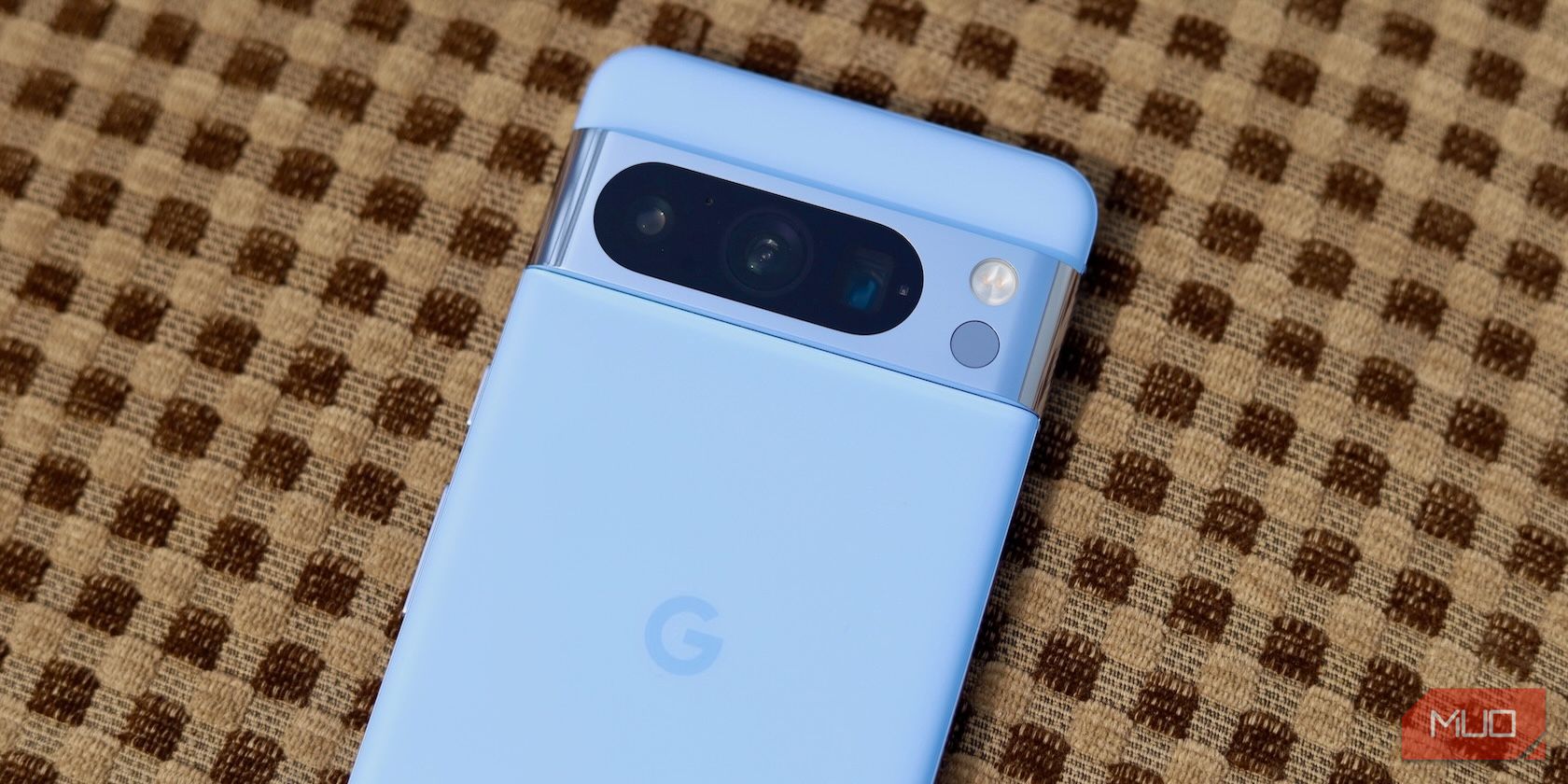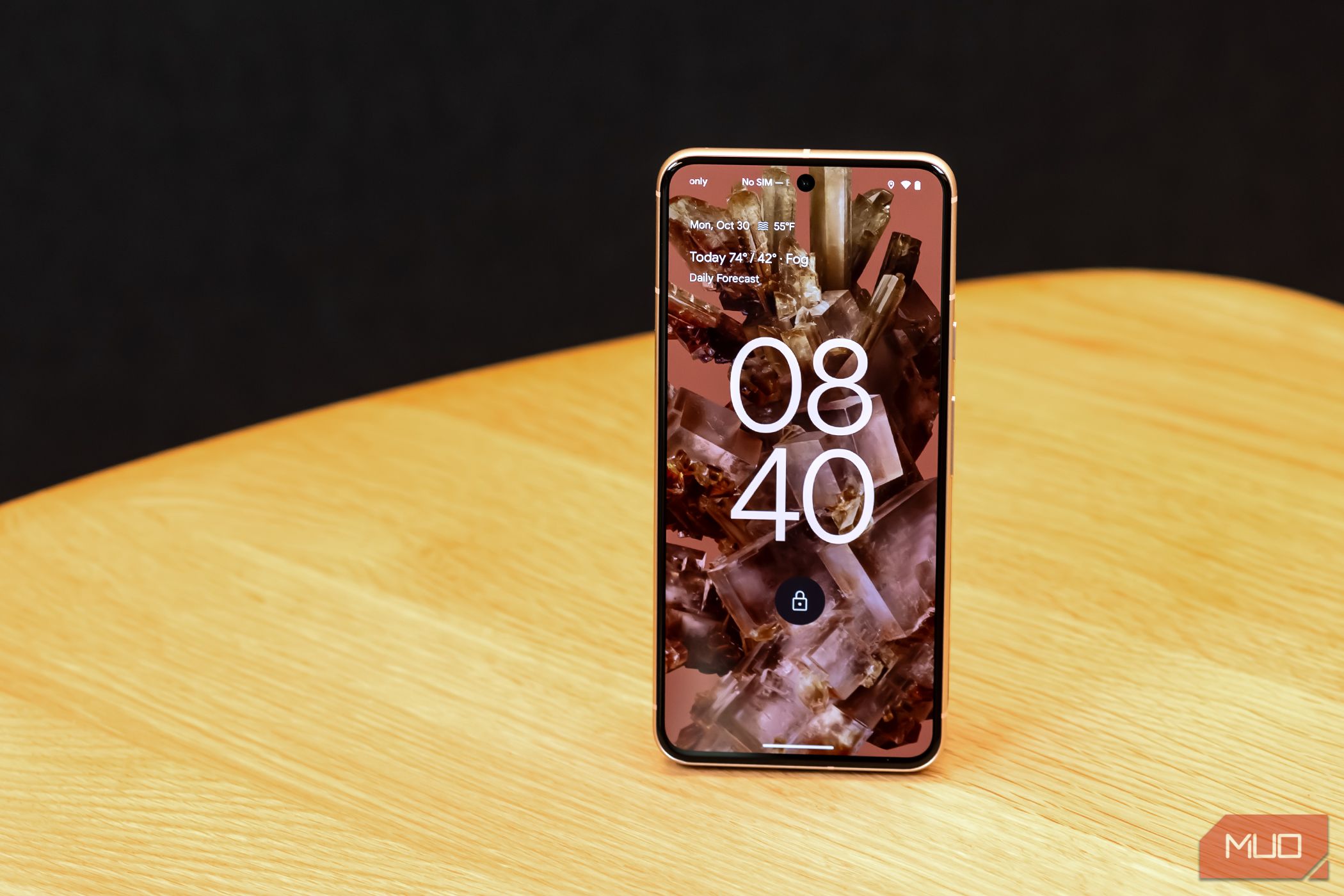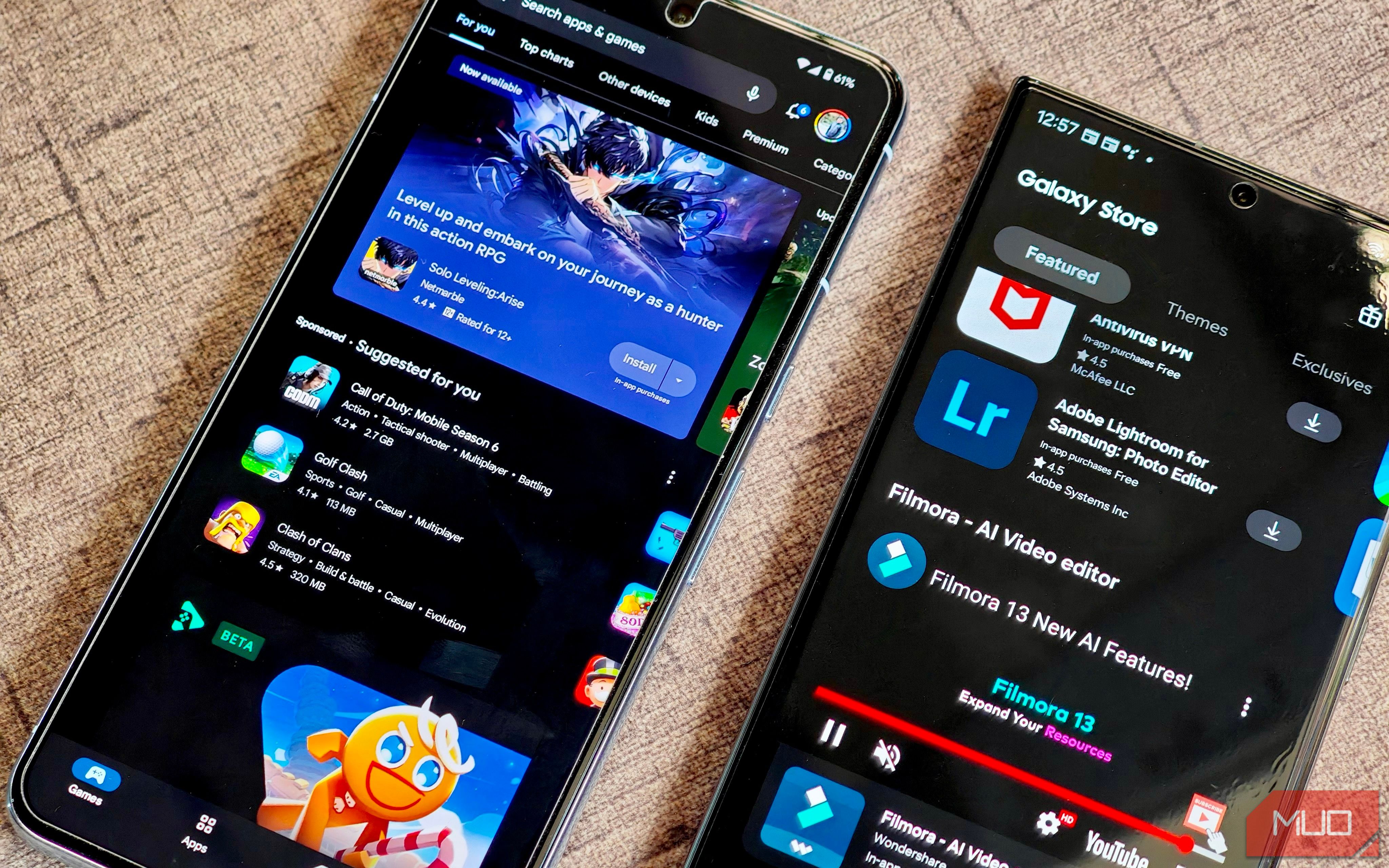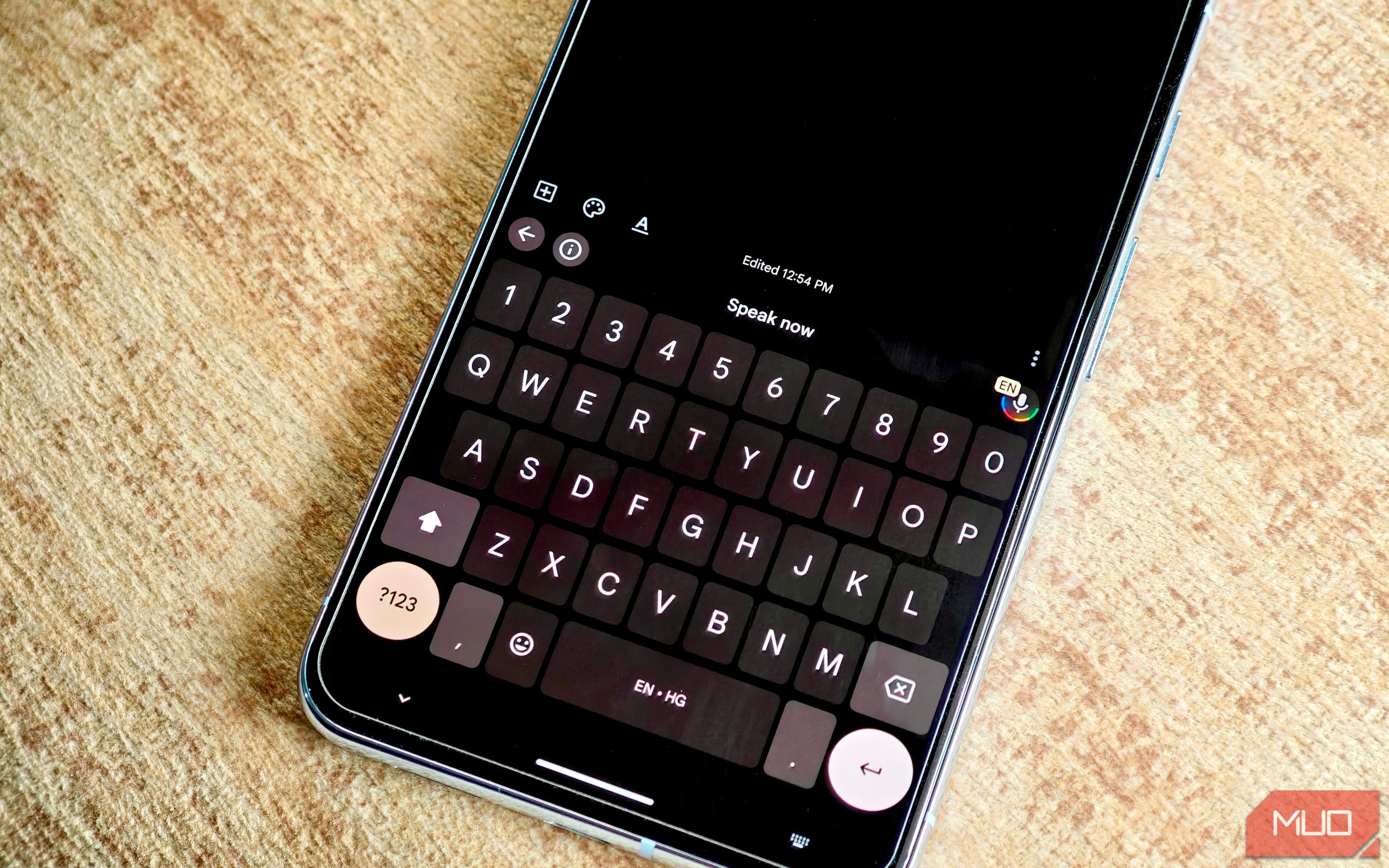Key Takeaways
- Samsung phones are feature-rich, but Pixels trump them in some key areas.
- Google Pixel’s superior image processing means it can capture fast-moving subjects without issues.
- Pixel phones are also the first in line to get new Android updates along with Feature Drops.
After years of using multiple flagship Samsung phones, I switched to the Pixel 8 Pro in late 2023, frustrated by the lack of some key features on Galaxy devices. Below are the reasons why I made the switch.
Pixel Phones Get Android Updates First
With a Pixel phone, you get the latest Android updates the day Google releases them. That’s not the case with a Samsung Galaxy phone. While the Korean company is among the fastest in updating its flagship phones to the latest Android build, there’s still a delay of a couple of months. And that’s despite Samsung working hard to reduce this gap in recent years.
Similarly, I can beta test upcoming Android releases months before their public release with a Google Pixel phone. While Samsung also has its own One UI beta program, it typically launches a few months after Google drops a beta Android build.
To make matters worse, Samsung might not fully implement all the features that Google adds in a new Android release. For example, Material You theming on a Galaxy phone is not as effective as on a Pixel phone.
While Google introduced Material You with Android 12 in 2021, Samsung finally implemented it fully with Android 13-based One UI 5 in late 2022. Likewise, it has been over four years since Google switched to navigation gestures, but out of the box, Samsung phones continue to use the three-button navigation bar.
Google’s Image Processing Is Better
A major issue with Samsung phones is their poor image processing. Over the years, I have owned several flagship Galaxy phones, and all of them have struggled to capture motion properly, making it impossible to click good pictures of kids or pets. Samsung phones are infamous for shutter lag, which leads to the subject being a blurry mess in the final image.
I clicked hundreds of pictures of my nephew and my neighbor’s dog throughout 2023 using the Galaxy S23 Ultra. Yet, only a handful of them are usable. The issue is even more prominent as the amount of available light reduces. You can use Camera Assistant to take better photos on your Galaxy phone, but it still won’t fully resolve the issue.
Since switching to the Pixel 8 Pro in October 2023, I have never faced this problem again. I don’t need to click multiple pictures of a subject to get one usable image. The Pixel’s image processing is smart enough to automatically bump the shutter speed when capturing moving subjects to avoid motion blur. Plus, features like Face Unblur and Top Shot ensure you don’t end up with an unusable picture.
Google Frequently Rolls Out Feature Drops
During the nine months I used the Galaxy S23 Ultra, it only received one major update with new features. While Samsung was quick with monthly security patches, they lacked new features.
A major OS and One UI update packing new features arrived almost nine months after I got the phone. Google also typically rolls out one major OS update for its Pixel phones yearly, along with monthly security patches. But at the end of every quarter, it releases a Feature Drop, packing several new features and improvements.
For example, the June 2024 Pixel Feature Drop added offline phone finding support, improved AI-generated Summaries in the Recorder app, and DisplayPort support to the Pixel 8. In comparison, the Galaxy S24—Samsung’s 2024 flagship—has not received such a feature-packed update in the first six months since its launch.
Duplicate Apps on Samsung Phones
Pixel phones ship with several pre-installed Google apps, such as Gmail, Chrome, Google Messages, etc. Samsung phones ship with all these apps plus the company’s own take on them.
Out of the box, Galaxy phones come with two browser apps: Samsung Internet and Google Chrome. Similarly, they have two app stores: Galaxy Store and Google Play Store. Other examples include Samsung Notes, Samsung Wallet, Samsung Music, and Samsung Pass—all apps that offer the same functionality as the Google apps your Galaxy phone ships with.
These duplicate apps are annoying and ruin the experience of using a Galaxy phone. You can safely disable or uninstall many of these apps on your Galaxy phone. But you should not have to do this on flagship phones that cost $1,000 or more.
Pixel Phones Can Screen Your Calls
While you can block spam calls on Android, the Pixel 6 and newer models have a handy Call Screen feature that takes things to another level. It automatically analyzes the incoming call’s phone number and declines if it’s spam. If not, it attends the call and asks the caller why they’re calling you.
The Call Screen feature also shows a real-time transcript of their response, so you can pick up the phone if it is an important call.
Samsung phones pack a similar feature called Bixby Text Call, but it’s not as effective since it does not screen calls. So, when you use Bixby Text Call to pick up an incoming call, the voice assistant will introduce itself to the caller and ask why they are calling. After this, you must enter your responses manually by typing, which Bixby Text Call will read out.
In comparison, Google’s Call Screen feature is smart enough to screen and hang up spam calls without your phone ringing. If it’s a genuine caller, your phone will ring and display the caller’s response, upon which you can then act manually.
Google Offers On-Device Voice Typing
You need a Pixel phone for the best voice typing experience. Unlike Samsung phones, Pixel 6 and newer devices feature on-device voice typing, meaning the phone will process your voice locally and convert it into text. While this might not seem like a big deal, it speeds up the entire process and dramatically improves the overall experience of using voice typing.
I gave up on my Galaxy S23 Ultra due to the poor voice typing experience. The phone would automatically switch between languages despite me only using English. Worse, the accuracy wasn’t that good. In most cases, it would fail to recognize what I was saying accurately. There was also a delay in the phone recognizing my voice and converting it into text.
In comparison, voice typing on the Google Pixel 8 feels almost magical. It works almost instantly and accurately. Even better, I can use voice typing to delete text, add emoji, or even send a written message.
The above issues don’t mean Pixel phones are superior to Samsung’s flagships. Galaxy phones offer better performance, longer battery life, and bigger, beautiful displays. For all their positives, Pixel phones deliver an inconsistent experience. Plus, they’re not as widely available as Samsung phones, and Google’s support is nowhere close to the latter as well.




